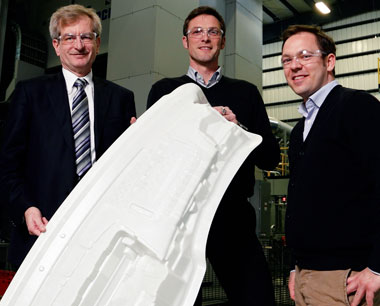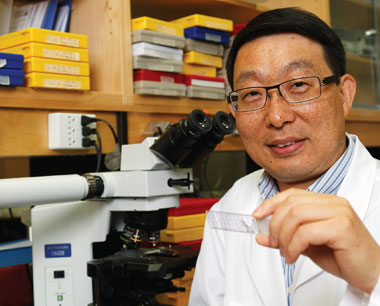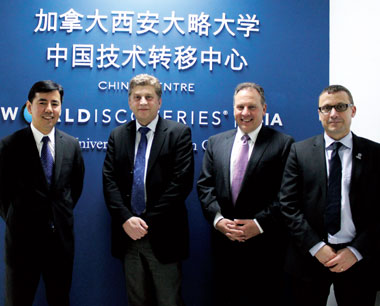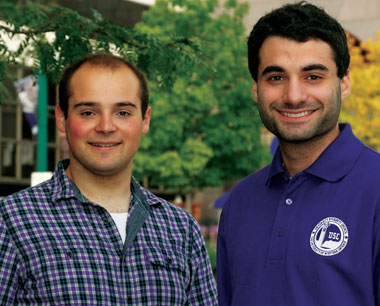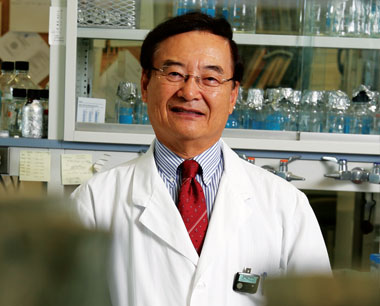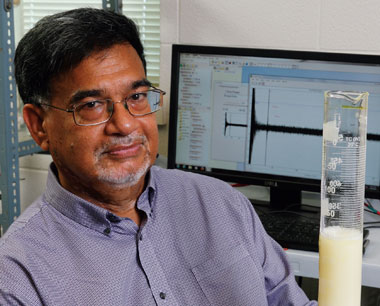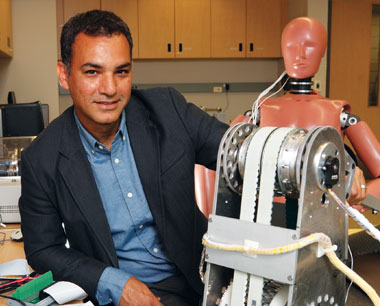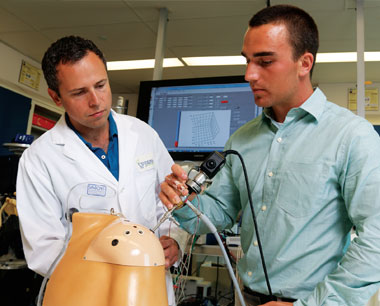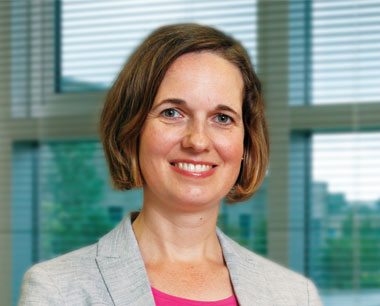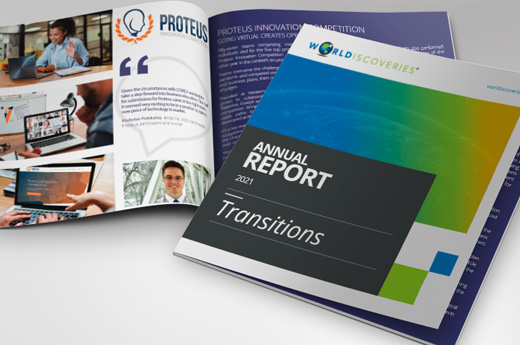The windows wrap like a windshield around The Collider Centre for Technology Commercialization at Western’s Advanced Manufacturing Park (AMP). They look out one way to the Wind Engineering, Energy and Environment (WindEEE) Dome, and the other to the Fraunhofer Project Centre for Composites Research
at Western (FPC@Western).
This newest AMP building, opened in June 2014, was designed to hasten the collision of ideas for applied research – to make it easy for scientists, technicians and engineers to interact with business partners and creative types and move innovations to market. One point of contact is The Collider’s atrium — with flexible seating for conversations, lectures or casual lunches. The views out to the WindEEE Dome and the FPC@Western inspire possibilities.
This unique campus, sprouting from an old farm field, is a Western joint venture with Germany’s Fraunhofer Institute for Chemical Technology. Fraunhofer is the global leader in applied research. John Capone, Western Vice-President Research says that the FPC@Western has created a multiplier effect. “It’s an ecosystem that we are building here,” he says. “The WindEEE Dome is not yet open, but they just tested their first tornado. The whole thrust is to link discoveries to applications and benefits. That is the Fraunhofer model of applied research. We have the biggest press in North America and can do things at an industrial scale.”
The FPC@Western opened in 2012 with a Dieffenbacher 2500 tonne compression moulding press. The facility expanded in 2013/14 to accommodate a new range of injection molding presses. Contract research clients pay a fee for the FPC@Western expertise and facilities – and are fully booked through 2014.
Capone says that the FPC@Western attracts talent – both seasoned executives and young entrepreneurs and graduates. “You have people here with a profit and loss mentality and they want to test products. These are wonderful partnerships and the opportunity is huge,” he says. “They need external validation. The University’s role is to act as a catalyst. What research we do should create an impact.”
Right now, there are 7 applied research specialties in composites, including: resin transfer; automated preforming and compression molding technologies; injection molding of long fibre reinforced thermoplastics; thermoplastic tape lying and thermosetting; and fibre reinforced composites based on sheet molding compounds. These are the in-demand composite materials for the auto, aerospace, renewable energy and advanced building products industries. “We will be known for new materials, new methods of sustainability and new ways to measure productivity,” says Capone.
Tobias Potyra has been manager of operations at the FPC@Western since 2011. He says the highlight of his Canadian work experience has been industry’s rapid embrace of Fraunhofer’s model of applied research. “In Germany, 40-50% of our programs are with private industry partners,” he says. “Here – almost 80-90% of our projects are with industry. It has exceeded expectations.”
The toughest challenge for adapting the Fraunhofer model to Canada was the stark difference in the education system. “In Germany when you get your PhD there are no classes. You work as an engineer in industry or in a Fraunhofer institute and interact with industry,” he says. “In Canada, there is less exposure to industry until you graduate.”
Potyra hopes that going forward more money can be dedicated to funding young trainees and staff in all the strands of composite research. “We need a specialist for each technology,” he says. “You could easily employ 2-3 engineers in each composite specialty and keep them busy.”
Like Capone, Potyra sees synergies between the FPC@Western and the WindEEE Dome in alternative energy. “For wind turbines, we can make parts and test them at WindEEE, or try and test a new shape in composites that cannot be made in metal,” he says. This may be the perfect storm for the future
of advanced manufacturing.

